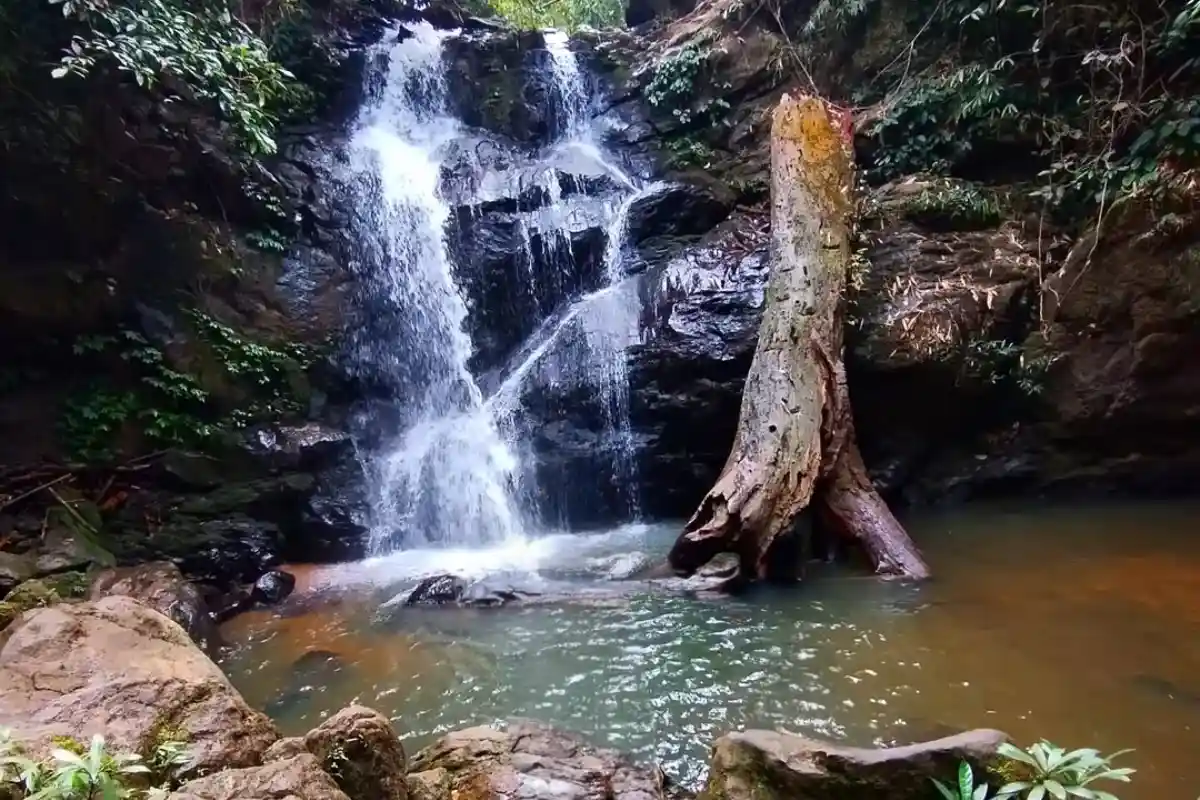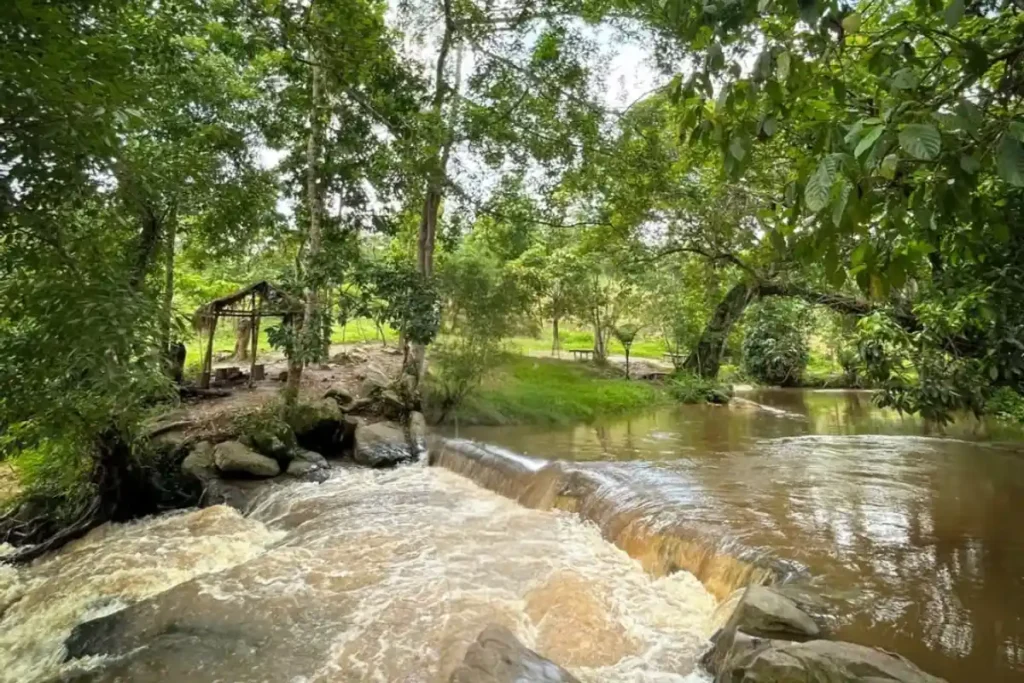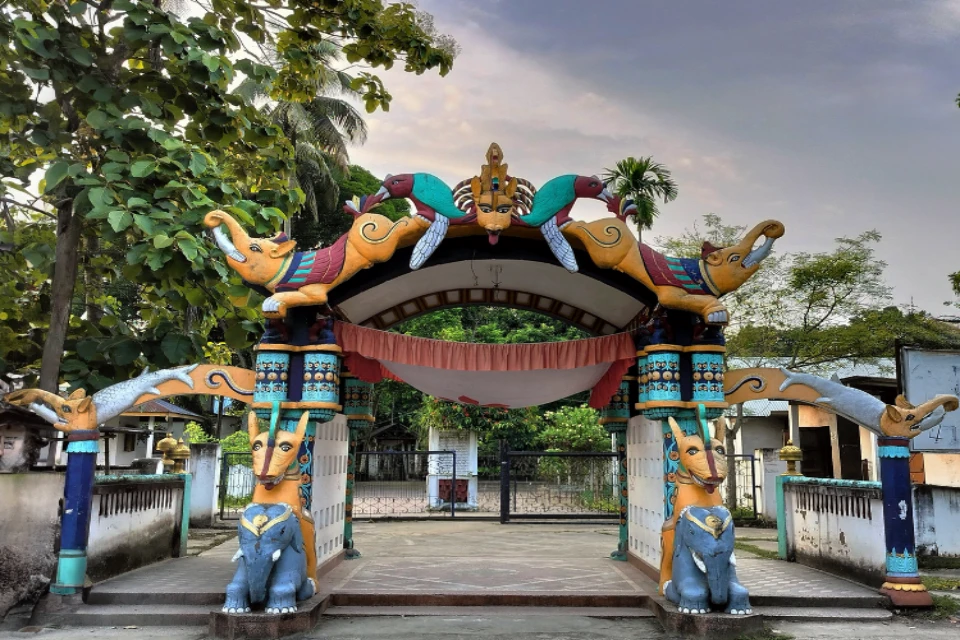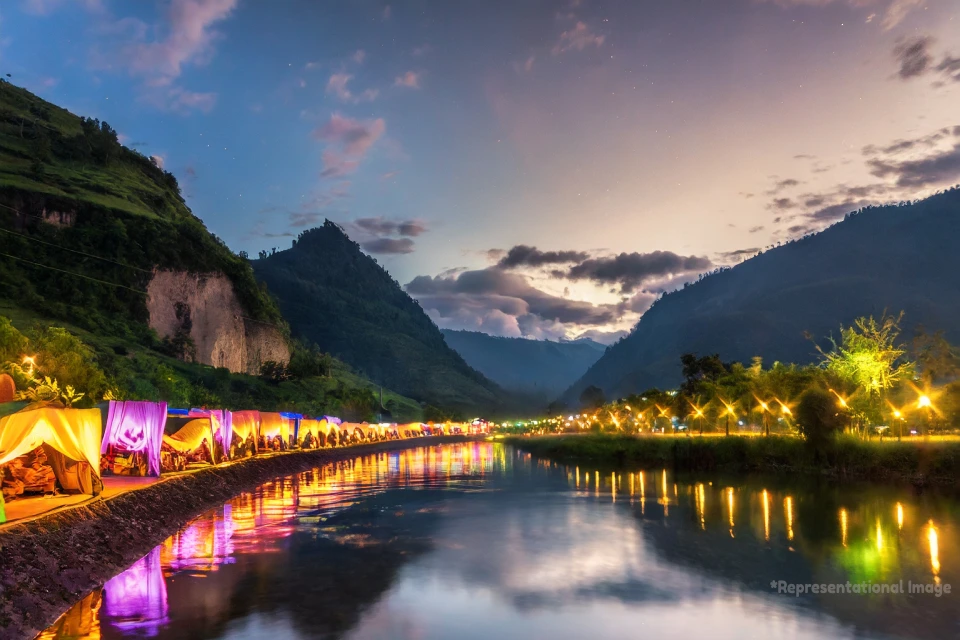Explore Garbhanga Reserve Forest near Guwahati, a perfect summer picnic spot with lush greenery, waterfalls, and a serene natural retreat.
Diversity Assam
Updated on :
Share this post
Nestled on the outskirts of Guwahati, Assam, Garbhanga Reserve Forest is a pristine haven of lush greenery, diverse wildlife, and mesmerizing landscapes. This forest, which has now been designated as the Garbhanga Wildlife Sanctuary, is a paradise for nature enthusiasts, adventure seekers, and eco-tourists.
It serves as a vital green lung for Guwahati, offering a perfect retreat from the city’s hustle and bustle. With its rich biodiversity, scenic trekking routes, and tranquil ambiance, Garbhanga is emerging as one of the most promising destinations for tourism in Assam.

Essential Details About Garbhanga Reserve Forest
Location and Accessibility
Garbhanga Reserve Forest is located approximately 15 kilometers southwest of Guwahati, near the Assam-Meghalaya border. It spans over 117 square kilometers, making it one of the largest green covers near the city. The forest is easily accessible through multiple routes, including those from Lokhra, Gorchuk, and Basistha, making it convenient for tourists to explore.
The most popular way to reach Garbhanga is by trekking from Basistha, which is known for its Basistha Temple, a revered pilgrimage site. The trek to Garbhanga from Basistha is about 17 kilometers long and offers an exhilarating experience through hilly terrains, dense forests, and scenic landscapes.
Activities to do
Garbhanga Picnic Spot and Summer Picnic
Garbhanga Reserve Forest is a picturesque destination filled with natural beauty, making it a weekend getaway from Guwahati. The Garbhanga Picnic Spot, nestled within the forest, offers visitors a tranquil setting to relax by the river or under the shade of dense greenery. Its main attractions include a calm atmosphere, flowing streams, and small waterfalls, which enhance the picturesque beauty and provide a refreshing experience.
During the summer, the cool climate provides refuge from the heat, making this place even more appropriate for picnics. Visitors can enjoy the beauty of nature while sitting amidst the lush forest. The presence of small waterfalls and riverside areas adds to the experience, making it perfect for spending quality time. A well-maintained and eco-friendly approach can make Garbhanga Picnic Spot a memorable summer retreat.

Trekking and Adventure Tourism
Garbhanga is renowned for its trekking trails, which attract adventure enthusiasts from across the region. The trekking routes vary in difficulty, making them suitable for both beginners and seasoned trekkers. Some of the most popular trekking trails include:
- Basistha to Garbhanga Trek – This 17-kilometer trail is the most famous
trekking route. It takes trekkers through dense forests, small streams, and
picturesque landscapes. - Lokhra to Garbhanga Trek – This relatively shorter trek is suitable for those
who prefer a moderate hike. - Meghalaya Hills Trek – A cross-border trek that allows visitors to explore the
scenic hills of Meghalaya.
Apart from trekking, tourists can also engage in activities like camping, wildlife photography, nature walks, and meditation in the serene environment of Garbhanga.
Best Time to Visit
Garbhanga Reserve Forest can be visited throughout the year, but the best time to explore is during the winter and post-monsoon seasons (October to March). During this time, the weather is pleasant, and the forest is lush and green, making it ideal for trekking and wildlife spotting. The monsoon season (June to September) enhances the beauty of the waterfalls and streams but can make trekking difficult due to slippery trails and increased insect activity. Summer months (April to June) can be warm, but the dense canopy provides ample shade and coolness.
How to get there
- By Air: The nearest airport is Lokpriya Gopinath Bordoloi International Airport,
Guwahati, around 30 km from Garbhanga. - By Train: Guwahati Railway Station is the nearest railhead, about 20 km from
the forest. - By Road: The forest is well-connected via road from Guwahati. Taxis, buses,
and private vehicles can be used to reach the starting points of trekking trails.
Permits & Guidelines
- Visitors need to obtain entry permits from the forest department before venturing into the reserve.
- Hiring a local guide is recommended to ensure a safe and informative trekking experience.
- Wildlife enthusiasts should carry binoculars and cameras for birdwatching and photography.
Wildlife in Garbhanga
One of the main attractions of Garbhanga Reserve Forest is its diverse wildlife population.
Some of the notable species found here include:
- Hoolock Gibbon – India’s only ape species, frequently spotted swinging across
the trees. - Leopards – Though elusive, these majestic big cats inhabit the dense forest.
- Elephants – Large herds of elephants roam freely in this sanctuary, making it an
important elephant corridor. - Deer species – Including barking deer and sambar deer.
- Various reptiles and amphibians – Including rare frogs, snakes, and monitor
lizards.
The forest is also a birdwatcher’s paradise, with sightings of rare and migratory birds such as Rufous Woodpecker, Rosy Minivet, Hill Myna, Hornbills, and Green Magpies. The presence of numerous butterflies adds to the enchanting experience of exploring this forest.
Flora and Fauna
Garbhanga Reserve Forest boasts a rich ecosystem that supports a variety of flora and fauna. The forest is dominated by evergreen and deciduous trees, bamboo groves, and medicinal plants. It also plays a crucial role in maintaining the ecological balance of the region by serving as a catchment area for the rivers flowing into Guwahati.
The Role of Garbhanga in Assam’s Tourism
Garbhanga Reserve Forest plays a crucial role in Assam’s tourism, particularly as an eco-tourism destination that showcases the state’s rich biodiversity and natural beauty. Located on the outskirts of Guwahati, it offers a peaceful escape from the bustling city life, attracting nature lovers, birdwatchers, and adventure enthusiasts. The forest serves as a perfect spot for hiking and trekking, with trails that wind through dense greenery, offering breathtaking views of the surrounding landscapes.
One of the most significant aspects of Garbhanga Reserve Forest is its proximity to Pobitora Wildlife Sanctuary, which is famous for hosting a large population of the endangered one-horned rhinoceros. This connection enhances Garbhanga’s role in wildlife tourism, offering visitors an opportunity to explore both the forest and sanctuary. The forest is also home to various species of flora and fauna, making it an attractive destination for wildlife photographers.
Additionally, Garbhanga’s accessibility from Guwahati has made it a popular day-trip
destination. The serene environment and diverse wildlife make it a must-visit for those interested in Assam’s natural heritage. With eco-tourism on the rise, Garbhanga Reserve Forest significantly contributes to Assam’s tourism industry, highlighting the importance of conservation and sustainable travel practices.
Some initiatives include:
- Eco-friendly trekking and camping activities
- Strict anti-poaching measures to protect wildlife
- Involvement of local communities in tourism and conservation efforts
- Promotion of nature-based education and awareness programs
Tourists visiting Garbhanga are encouraged to follow responsible tourism practices, such as:
- Avoiding littering and carrying back plastic waste.
- Respecting the local flora and fauna.
- Following designated trekking paths to prevent habitat destruction.
Nearby Attractions
Garbhanga’s location near Guwahati makes it an ideal base for exploring other attractions in the region. Some nearby places of interest include:
Basistha Temple
Basistha Temple, located near Garbhanga Reserve Forest in Guwahati, Assam, is an ancient Shiva temple with deep mythological significance. Believed to be built by Ahom king Rajeswar Singha in the 18th century, the temple is associated with the sage Vasistha, who is said to have meditated here. Surrounded by lush greenery and the tranquil Basistha River, the site offers a serene atmosphere for devotees and nature lovers alike. The nearby Garbhanga Reserve Forest, known for its rich biodiversity and elephant habitat, adds to the attraction, making it an ideal spot for spiritual seekers and adventure enthusiasts.
Deepor Beel
Garbhanga Reserve Forest and Deepor Beel are two stunning natural attractions near Guwahati, Assam. Garbhanga Reserve Forest, located on the outskirts of the city, is a lush green forest known for its rich biodiversity, including elephants, butterflies, and exotic birds. It is a popular trekking and bird watching destination. Deepor Beel, a freshwater lake and Ramsar site, is a haven for migratory birds, making it a paradise for birdwatchers. The serene waters, surrounded by lush greenery, offer a peaceful retreat. Together, these two spots provide nature lovers with a perfect escape into Assam’s pristine wilderness, just a short drive from Guwahati.
Assam State Zoo
Garbhanga Reserve Forest, located near the Assam State Zoo in Guwahati, is a serene natural retreat offering a diverse wildlife experience. Spanning over 12,000 hectares, the forest is home to a wide variety of flora and fauna, including elephants, tigers, and various species of birds. The reserve is also a popular spot for nature walks, bird watching, and eco-tourism. Its proximity to the Assam State Zoo makes it an ideal destination for wildlife enthusiasts and nature lovers, providing a peaceful escape from the bustling city while exploring the rich biodiversity of Assam.
Kamakhya temple
Garbhanga Reserve Forest, located near Guwahati, Assam, is a serene escape known for its lush greenery, rich biodiversity, and scenic trails. Home to elephants, deer, and various bird species, it is a paradise for nature lovers and trekkers. The forest is also famous for its butterfly population and indigenous Karbi villages. Just about 15 km away, the revered Kamakhya Temple, one of India’s most significant Shakti Peethas, sits atop Nilachal Hill. Devotees visit this ancient temple to seek blessings from Goddess Kamakhya. Together, these destinations offer a perfect blend of spirituality and adventure for travelers exploring Assam.
Endnotes
Garbhanga Reserve Forest is a hidden treasure waiting to be explored. Whether you’re a trekking enthusiast, a wildlife lover, or someone seeking solitude in nature, this forest offers an unparalleled experience. As Assam continues to promote eco-tourism, Garbhanga is poised to become a major attraction for travelers looking to experience the untouched beauty of Northeast India.
So, if you’re planning your next adventure, make sure to include Garbhanga Reserve Forest in your itinerary and immerse yourself in the breathtaking landscapes and diverse wildlife that this sanctuary has to offer.

